
Researchers suggested employing time crystals for emulating vast networks using minimal computational resources.
Time crystals sound like something out of science fiction, but they may be the next major leap in quantum network research. A team based in Japan has proposed a method to use time crystals to simulate massive networks with very little computing power.
They published their results on October 16, 2020, in Science Advances.
First theorized in 2012 and observed in 2017, time crystals are arrangements of matter that repeat in time. Normal crystals, such as diamonds or salt, repeat their atomic self-organization in space, but do not show any regularity in time. Time crystals self-organize and repeat their patterns in time, meaning their structure changes periodically as time progresses.
“The exploration of time crystals is a very active field of research and several varied experimental realizations have been achieved,” said paper author Kae Nemoto, professor in the principles of informatics research division at the National Institute of Informatics. “Yet an intuitive and complete insight of the nature of time crystals and their characterization, as well as a set of proposed applications, is lacking. In this paper, we provide new tools based on graph theory and statistical mechanics to fill this gap.”
The video begins with a perfect time crystal. When time goes on, the parameter of the quantum system changes so that the time crystal starts to melt. We can see how much the time crystal has melted by looking at the network. It is interesting to see that the time crystal does not melt equally, some parts are melting faster than others. Towards the end of the video, we can see that the time crystal has completely melted. Credit: Global Research Center for Quantum Information Science, the National Institute of Informatics in Japan
Nemoto and her team specifically examined how the quantum nature of time crystals — how they shift from moment to moment in a predictable, repeating pattern — can be used to simulate large, specialized networks, such as communication systems or artificial intelligence.
“In the classical world, this would be impossible as it would require a huge amount of computing resources,” said Marta Estarellas, one of the first authors of the paper from the National Institute of Informatics. “We are not only bringing a new method to represent and understand quantum processes, but also a different way to look at quantum computers.”
Quantum computers can store and manipulate multiple states of information, meaning they can process huge data sets with relatively little power and time by solving several potential outcomes at the same time, rather than one by one like classical computers.
“Can we use this network representation and its tools to understand complex quantum systems and their phenomena, as well as identify applications?” Nemoto asked. “In this work, we show the answer is yes.”
The researchers plan to explore different quantum systems using time crystals after their approach is experimentally tested. With this information, their goal is to propose real applications for embedding exponentially large complex networks in a few qubits, or quantum bits.
“Using this method with several qubits, one could simulate a complex network the size of the entire worldwide internet,” Nemoto said.
Reference: “Simulating complex quantum networks with time crystals” by M. P. Estarellas, T. Osada, V. M. Bastidas, B. Renoust, K. Sanaka, W. J. Munro and K. Nemoto, 16 October 2020, Science Advances.
DOI: 10.1126/sciadv.aay8892
This work was supported in part by the Japanese Ministry of Education, Culture, Sports, Science and Technology Quantum Leap Flagship Program, the Japan Science and Technology Agency, the Japan Society for the Promotion of Science, and the John Templeton Foundation.
Other contributors include T. Osada, B. Renoust and W.J. Munro, all of whom are affiliated with the National Institute of Informatics. Contributors K. Sanaka and Osada are affiliated with the Tokyo University of Science. Contributors V.M. Bastidas and Munro are with the NTT Basic Research Laboratories & Research Center for Theoretical Quantum Physics. Contributor B. Renoust is with the Osaka University Institute for Datability Science. Renoust and Nemoto are also with the Japanese-French Laboratory for Informatics.


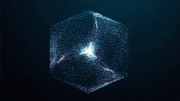
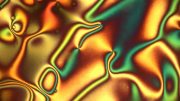

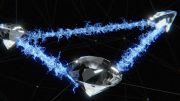
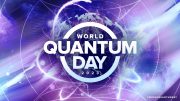
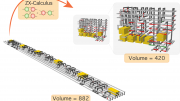
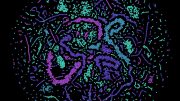
Very interesting.
Best of luck in the search for the experimental proof for the existence of “Time Crystals”.
Few possible additional assumptions for the authors to factor in are as follows: Hope, these are helpful!
1. The Nature and behaviour of time.
Maybe, time itself exhibits diffent behaviours as it flows (if it does). Both as discrete particles and also as a Wave. When we try to observe its flow or seek to trap Time crystals ( why it cannot be amorphous is not clear ) in its practical form , or its particle form, the likelihood of the Uncertainty principle kicking in is quite high! so error correction to ensure 100% accuracy of information embedded nneds to be ensured for reliability of the same.
2 Assumptions about the flow of time itself.
I suspect if Time itself exists in discrete particle form which is infinite, it may never be detectable its infitesmally small state (whether amorphous or crystalline). In such a scenario the mathematics of infinite dimensions of space and infinitae possibilities of discrete time particles needs to be understood and solved.
I also suspect that if the flow of time exhibits Wave like behaviour and the universe ( or the multiverse ) is not a ordered state { and Einstiens assumption about “God does not play dice” proves to be incorrect }, then the flow of time in its Wave form could be uneven and chaotic and the principles of Illiya Prigogens “irreversible thermodynamics” and fractals of time may be a more likely scenario.
If however, the flow of time exibits a Wave like behaviour and Einstiens theory of ” God does not play dice” turns out to be accurate, then the Universe and Multiverse, as observed by us, will exhibit symmetry and ordered and disciplined behaviour, when observed by conscious beings.( Not sure how the same will function in the dream state, deep sleep state or the unconcious state. ) ! This could also mean the existence of Time Crystals or amorphous discrete and infinitesmally small packets of time, which can exhibit true quantum state behaviour ( as currently understood by us) of zero, one or neither zero nor one, when observed in a three dimensional perspective. More quantum states (infinitismal in number) may exist in higher dimensions greater than three , with the possibility of an infinite number of quantum states being mathematically possible in single Qbit itself. So one Qbit could have an entire multiverse with an infinite number of Qbits emedded in it! Just like an onion being peeled! Natures Quantum Microprocessor.
The possibility does also exist that the observable and observed Universe may exist and exhibit both ordered behaviour and symmetry in some sub-space AND also exhibit chaos which may appear to prevail in the observable and observed Universe in other sub-spaces in the known space dimension. This may be reflective of the existence of forces aligned or ordered or misaligned or chaotic and the same fighting for supremcy !
Finally, the thought does cross the thinking mind, about the linearity, non-linearity, cyclicity and spherical ( not necessarily a perfect sphere) and higher dimensional structures and entities existing in the realm beyond our current assumptions of space time and the existence of entities who are existing in a timeless spaceless and beyond thought itself, state !
If in doubt , I would strongly recommend all great and brilliant minds to refer to the Pascals dilemma connundrum!!
Have a great day.
Further research could lead to AI powered robots that “sleep” for thousands of years, during travel to other locations in our galaxy. A pre-coded electro magnetic signal then awakens them, so they can start DNA seeded organic life.
The minuscule throckmortons are overwhelmed by grandiloquence at one minute, thirty seconds.
Any baka gaijin can see that.
… a proper word is “simulate”!… Like there is ever going to be a time particle….
NAND+NOR=℅√v
Time is a fictional process conjured up by humans,they use time pieces to regulate their schedules. A time machine or interdimentional transponder can manipulate time and space. If you can manipulate time and space then its what ever time you want it to be, once you can control its fundimental components. This shows the direct correlation that if one can change time and space then time is fictitious. Its shows the whole galactic community that human beings aren’t ready for the introduction to highly advanced technilogical ammenities. One who doesn’t have a time manipulator is still in its infantile stages as a whole. That is why we are sequestered to this part of the galaxy till further notice. Here’s food for thought …. Maybe the life span of a human is just one long day seperated by light and darkeness…think about it while you ponder the thought of how much time you have left, if any at all . Use your time wisely for at this moment in time for now , you cannot get anymore time once it has been used. Thank you for your time.
We could just use resistors.